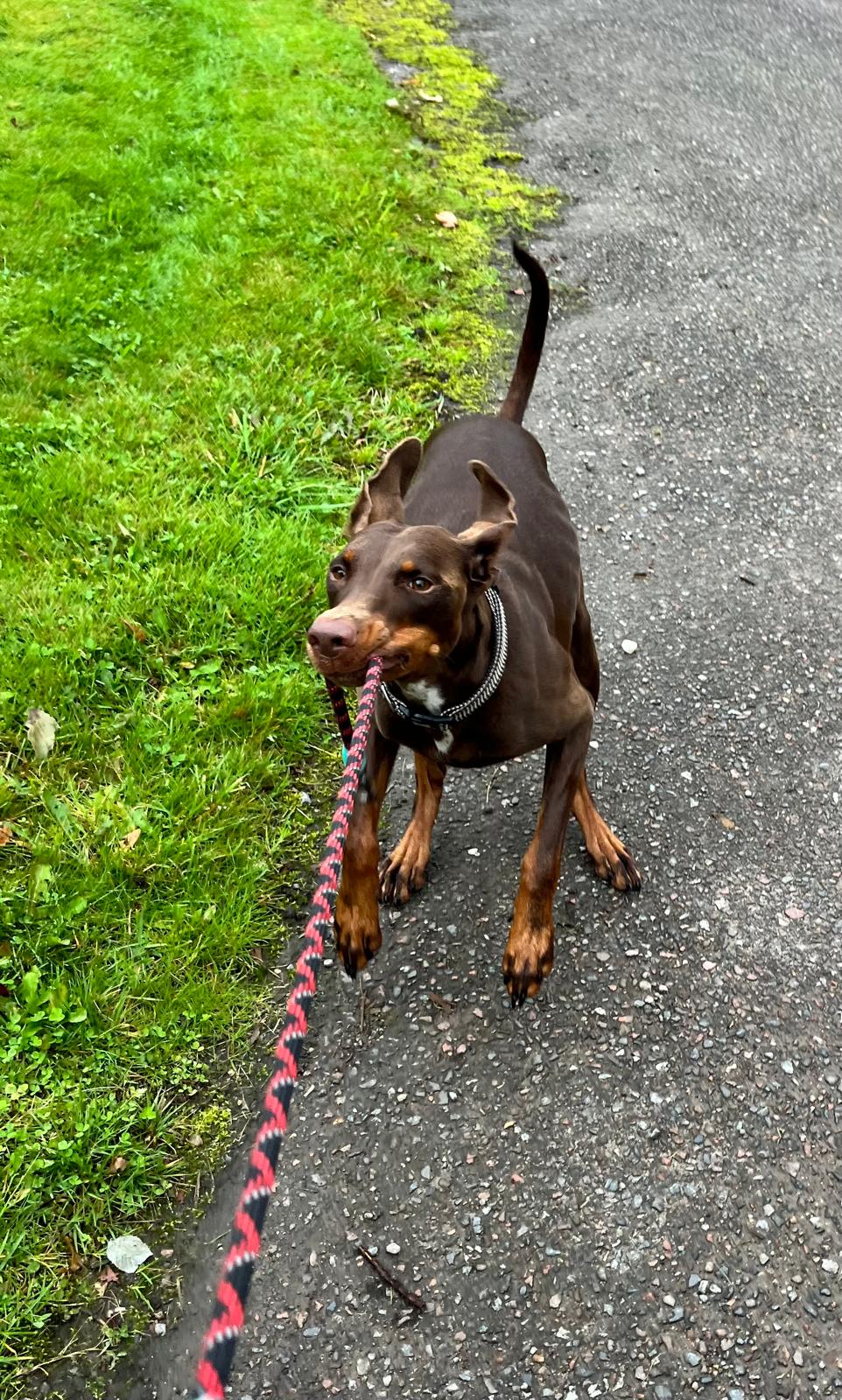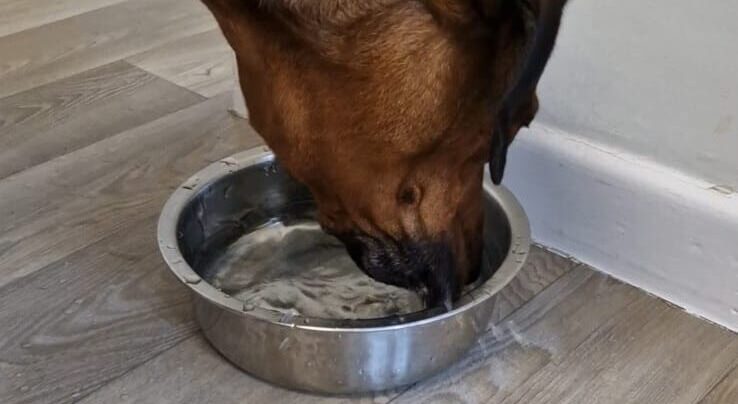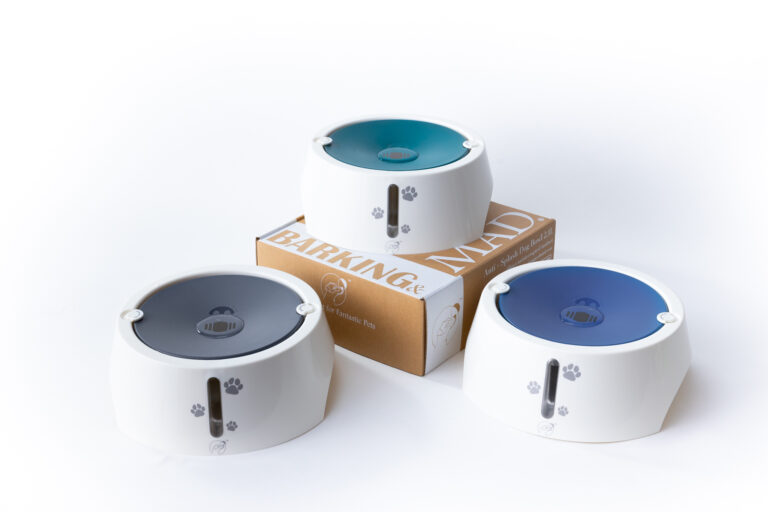Imagine this: It’s a lovely Saturday morning, the sun is shining and you’re ready for a peaceful walk with your dog. But as soon as you clip the leash onto his collar, your calm pup turns into a furry whirlwind, biting at the leash, jumping around and turning your peaceful walk into a tug of war.
If this sounds all too familiar, you’re not alone. Leash biting and jumping are common in dogs and while they can be annoying, they’re fixable.
In this post I’ll get into why dogs bite their leashes, jump and give you practical tips and techniques to help you and your dog have calmer, more enjoyable walks.
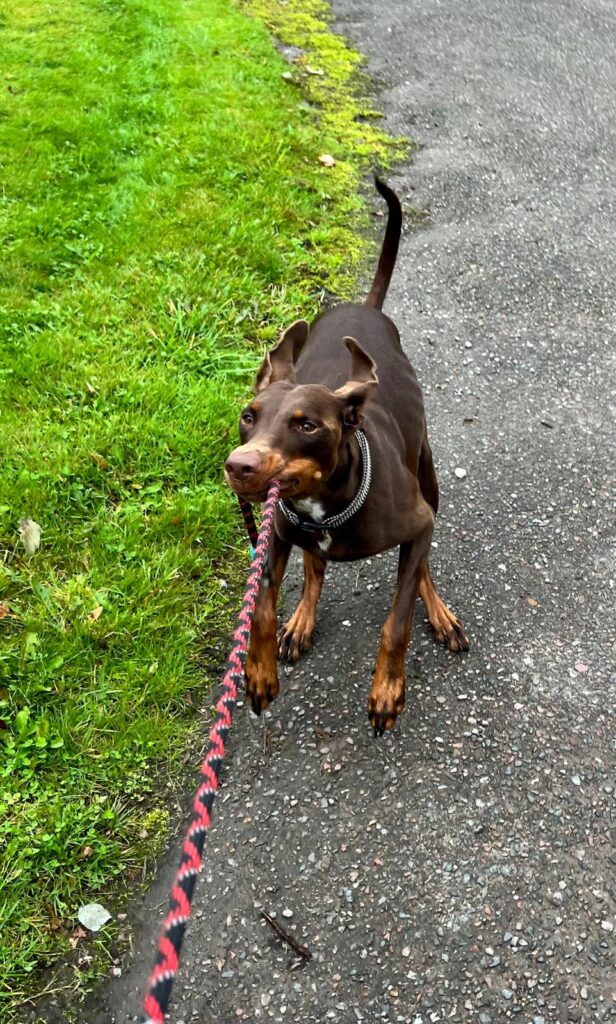
Why Dogs Bite and Jump?
Before we get into the solutions, let’s get into the reasons why your dog is doing this. Dogs biting leashes or jumping can be due to:
Many dogs, especially puppies, get over excited when it’s time for a walk. This excitement often turns into jumping and leash biting as a way to release pent up energy.
If your puppy bites the leash, it could be because they’re teething. Chewing helps soothe their gums and the leash is a convenient chew toy.
Sometimes dogs bite the leash or jump because they’ve learned that it gets a reaction from you. Whether it’s positive or negative, your dog sees this as a way to interact with you.
If a dog is frustrated, perhaps from not getting enough exercise or mental stimulation, they may express it through biting and jumping.
If a dog hasn’t been leash trained properly, they may not know how to behave on a walk and will exhibit undesirable behaviours like biting and jumping.

How to Stop Leash Biting and Jumping
Now we know why your dog is biting the leash and jumping, let’s get into some practical ways to fix this.
Start with Leash Training
Leash training is the foundation of a peaceful walk. When you start leash training make it a positive experience.
When you start leash training, let your dog get used to wearing a collar and leash in the house. Use positive reinforcement like treats and praise to reward calm behaviour.
If your dog starts biting the leash, stop moving and wait for them to calm down before you start moving again. This teaches your dog that calm behaviour equals forward progress.
A Note On Puppies
Remember, puppies will need more patience and consistency. They’re still learning and it’s your job to teach them that the leash isn’t a toy. Keep training sessions short and fun and always end on a positive note.
Redirect the Behaviour
If your dog is biting the leash due to excitement or frustration, try redirecting their energy to a more appropriate activity. For example, bring a tug toy or chew toy on the walk.
When your dog starts to bite the leash, offer the toy instead. This not only stops leash biting but gives your dog something to focus on.
Another way to redirect your dog’s attention is through commands like “sit” or “focus”. Teaching your dog to sit when they start to bite the leash can break the cycle of bad behaviour.
Reward them with a treat when they do, to reinforce good behaviour.
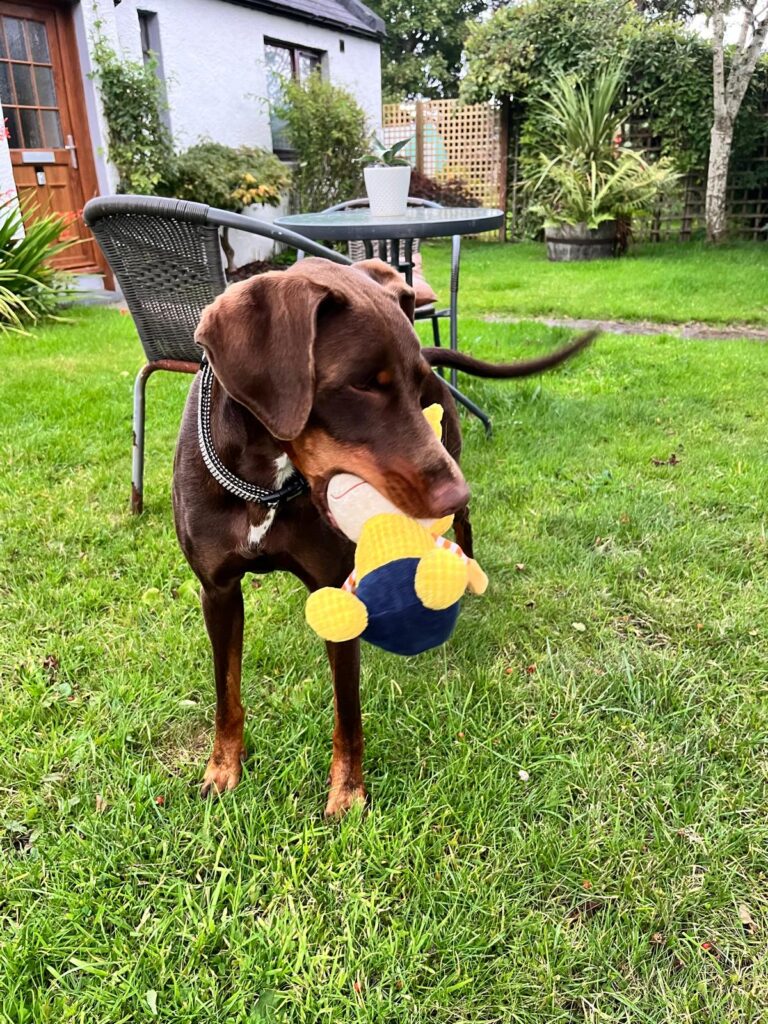
Positive Reinforcement
Positive reinforcement is a powerful tool in dog training. When your dog walks calmly without biting the leash or jumping, reward them with treats, praise or even a favourite toy. This teaches your dog that walking nicely means good things.
Be consistent with your rewards. If your dog learns that calm behaviour is always rewarded, they’ll do it more often. And don’t reward bad behaviour.
If your dog bites the leash and you play tug with it, they might think biting the leash is a game and reinforce the behaviour you’re trying to stop.
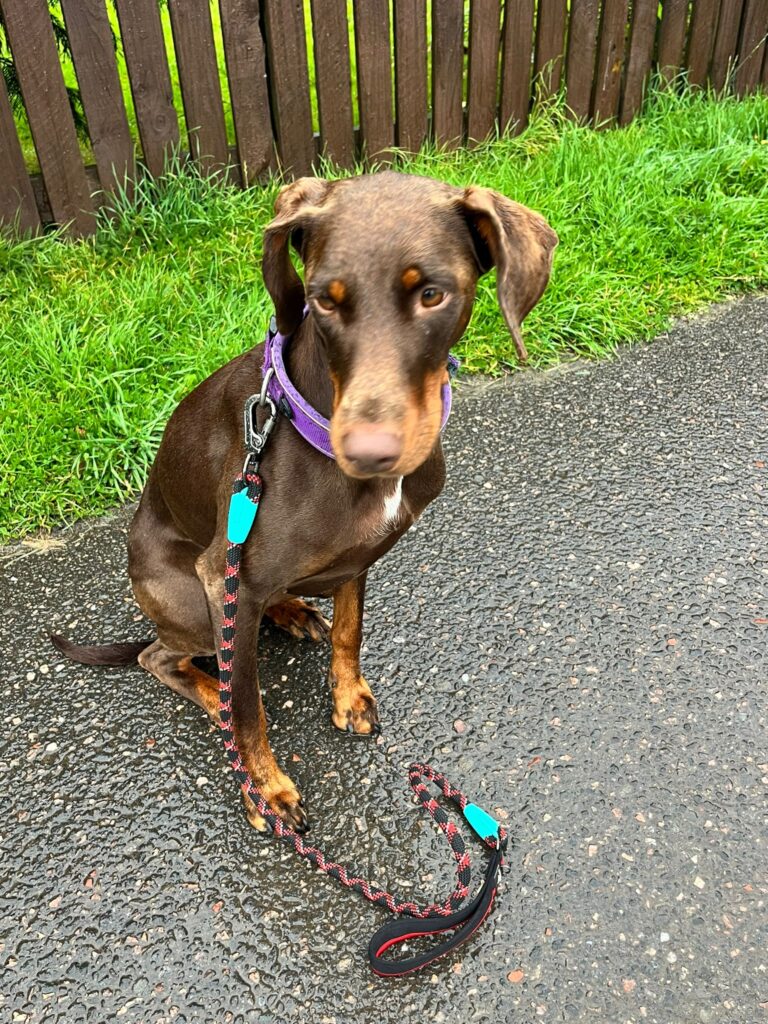
Stay Calm and Consistent
Your dog takes cues from you, so it’s important to stay calm and consistent on walks. If you get frustrated or angry, your dog will pick up on that energy and get more agitated.
Instead, take deep breaths and stay calm. When your dog starts biting the leash or jumping, calmly redirect their behaviour as above.
Consistency is key. Make sure everyone in your household is on the same page with leash training. Mixed signals will confuse your dog and slow progress.
Provide Mental and Physical Stimulation
Sometimes leash biting and jumping is a sign your dog isn’t getting enough mental or physical exercise. A tired dog is a good dog and will quickly learn bad behaviour like tugging the harness is bad.
High Energy Dogs
If you have a high energy dog, consider adding more intense activities like running, agility training or even dog sports. The more energy they burn off, the less likely they are to do unwanted behaviours like leash biting and jumping.
To stop biting and prevent leash biting sometimes comes down to keeping the dog engaged and with other dogs, remembering to remain calm if a situation like dogs biting dogs happens and remove the dog from the situation, rewarding good behaviour helps make it common behaviour, we have found this with other owners to! (Don’t forget to use treats)
Make sure your dog gets plenty of playtime, exercise and mental challenges each day. This could be longer walks, games of fetch or puzzle toys that keep their mind engaged.
Train in Different Environments
Dogs are creatures of habit and sometimes leash biting and jumping occurs because your dog is too comfortable in one routine or environment. Training your dog in different environments to help them generalise their good behaviour can be very rewarding.
Start in a quiet, familiar place like your backyard and gradually move to more distracting environments like parks or busy streets.
The aim is to teach your dog that good behaviour is expected wherever you are. If they can walk calmly at home, they should be able to do the same in other places with the right training and time.
Seek Professional Help If Needed
If you’ve tried these and your dog is still biting the lead and jumping, it’s time to seek professional help. A certified dog trainer or behaviourist can assess your dog’s behaviour and give you tailored advice and training plans. Sometimes underlying issues like anxiety or fear need more specific help.

Still have Questions? The FAQs!
Why does my dog bite the leash on walks?
Dogs bite the lead for excitement, frustration or lack of leash training. It’s a common behaviour in puppies but with the right techniques it can be managed.
How do I stop my dog biting the leash?
To stop your dog biting the lead use proper leash training, redirect their behaviour with toys and consistently reward good behaviour.
Don’t turn the leash into a tug toy as this will reinforce the behaviour.
Is leash biting aggressive?
Lead biting is rarely aggressive. It’s more common in excitement, frustration or teething in puppies. But if your dog shows other aggressive behaviour, consult a professional trainer.
What do I do if my dog jumps and bites the leash for excitement?
If your dog jumps and bites the leash for excitement, stay calm and redirect their energy into something else like sitting or playing with a toy.
Consistent training and positive reinforcement will help to stop this behaviour.
Is leash biting a sign of anxiety?
Yes, in some cases leash biting can be a sign of anxiety or stress. If your dog is anxious on walks, consult a professional trainer or behaviourist.
What type of leash for a dog that bites?
A sturdy, chew resistant leash is best for dogs that bite. Avoid retractable leashes as they encourage pulling and make’s it harder to control your dog during training.
The End Bit
Walking your dog should be fun not a fight. Follow these tips and your dog will learn quickly that walking nicely is the key to more fun outings and a happier life together.

Every dog is different so what works for one won’t work for another. Stay patient, stay consistent and celebrate the small wins along the way. Your dog will thank you and those peaceful Saturday morning walks will become a reality.

